Configuration
Source file: process-flow-configuration.htm
The ![]() Configuration subtab allows you to set up each process node of the flowchart. To enter it, go to the
Configuration subtab allows you to set up each process node of the flowchart. To enter it, go to the ![]() Process Setup tab and select
Process Setup tab and select ![]() Configuration from the drop-down list.
Configuration from the drop-down list.
 Pit
Pit
Pit configuration requires a closure cost value which is the total cost to close the mine. To specify this cost, enter the corresponding value into the Closure Cost field. Optionally, you can change the pit stage by selecting a new attribute from the Stage Override drop-down. This allows you to have different stage attributes for setups with the same pit models.
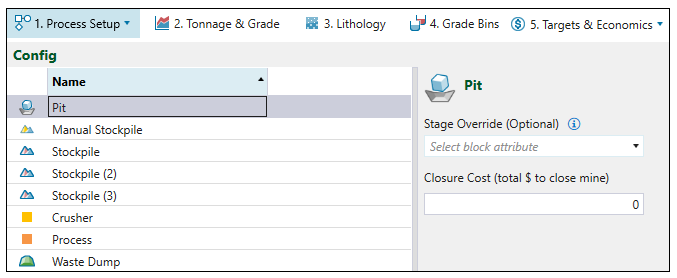
 Stockpile
Stockpile
A Stockpile refers to an existing stockpile for single element setups, that has been added as an Initial Stockpile on the ![]() Material Flow subtab. A stockpile is a temporary storage site for material that will be sent to a process at a later time. Such stockpiles can be used together with manual and process stockpiles. See Stockpiles for more information on process stockpiles.
Material Flow subtab. A stockpile is a temporary storage site for material that will be sent to a process at a later time. Such stockpiles can be used together with manual and process stockpiles. See Stockpiles for more information on process stockpiles.
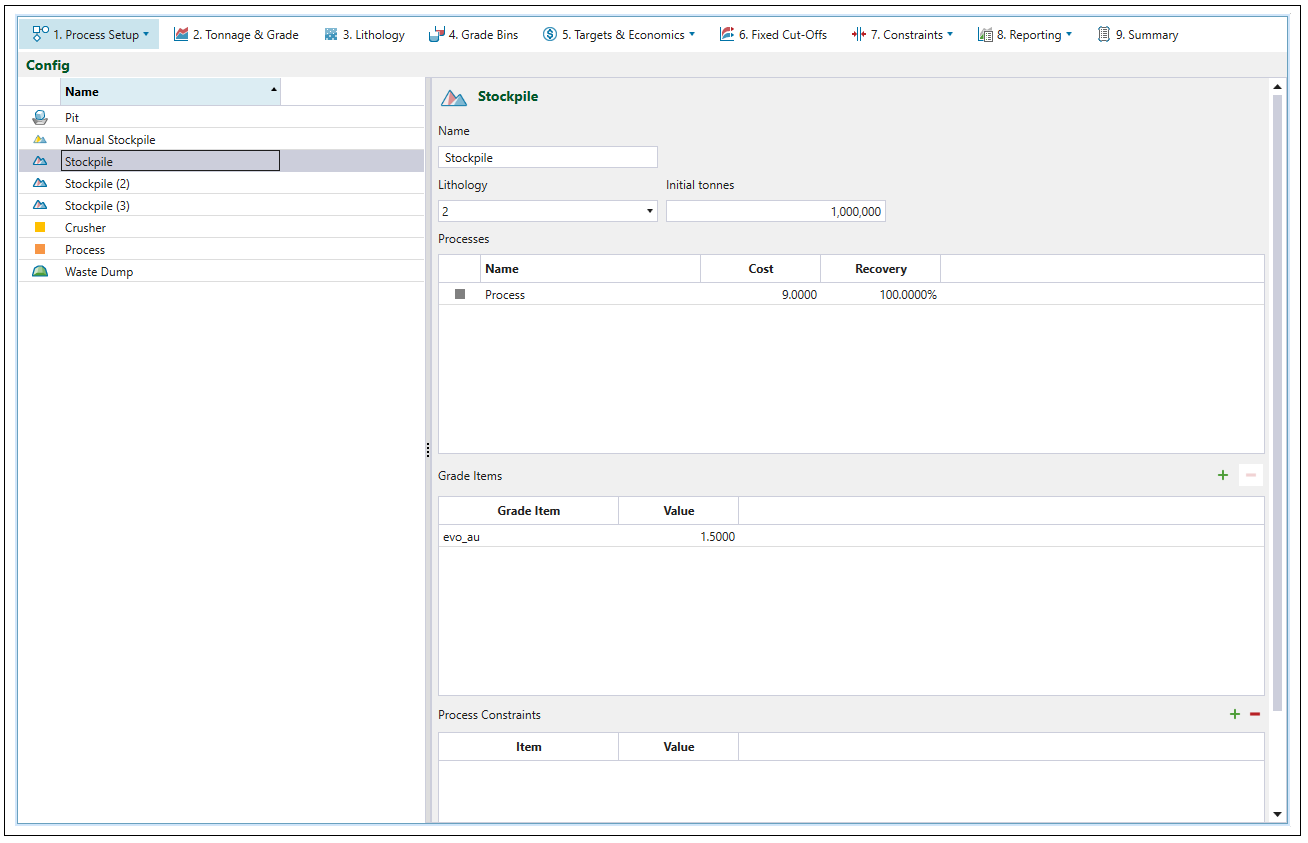
Enter the following information to configure a stockpile:
-
Name
Evolution assigns a default name when a stockpile is created. Enter a custom name if desired. -
Lithology
Choose the lithology type that the stockpile can store from an attribute from the imported pit. You can select only one lithology type per stockpile. -
Initial tonnes
This field represents the amount of material in the stockpile at the start of the setup. -
Processes
Set the cost and recovery of material from the stockpile for each process in the setup. -
Grade Items
For each added grade item, set the value of material stored at the stockpile. Click to add a grade item to the list. To remove a grade item, select it on the list and click
to add a grade item to the list. To remove a grade item, select it on the list and click  .
. -
Process Constraints
Process constraints are represented by attributes or columns from the imported pit. Click to add a process constraint to the list. To remove a process constraint, select it on the list and click
to add a process constraint to the list. To remove a process constraint, select it on the list and click  . For each process constraint, set the maximum value.
. For each process constraint, set the maximum value. Note: The combined value of all blocks sent to the stockpile must be equal to or under the value set for the defined process constraint.
 Manual Stockpile
Manual Stockpile
Manual stockpiles allow you to have greater control over grade ranges, but they cannot be used together with process stockpiles. See Stockpiles for more information on process stockpiles.
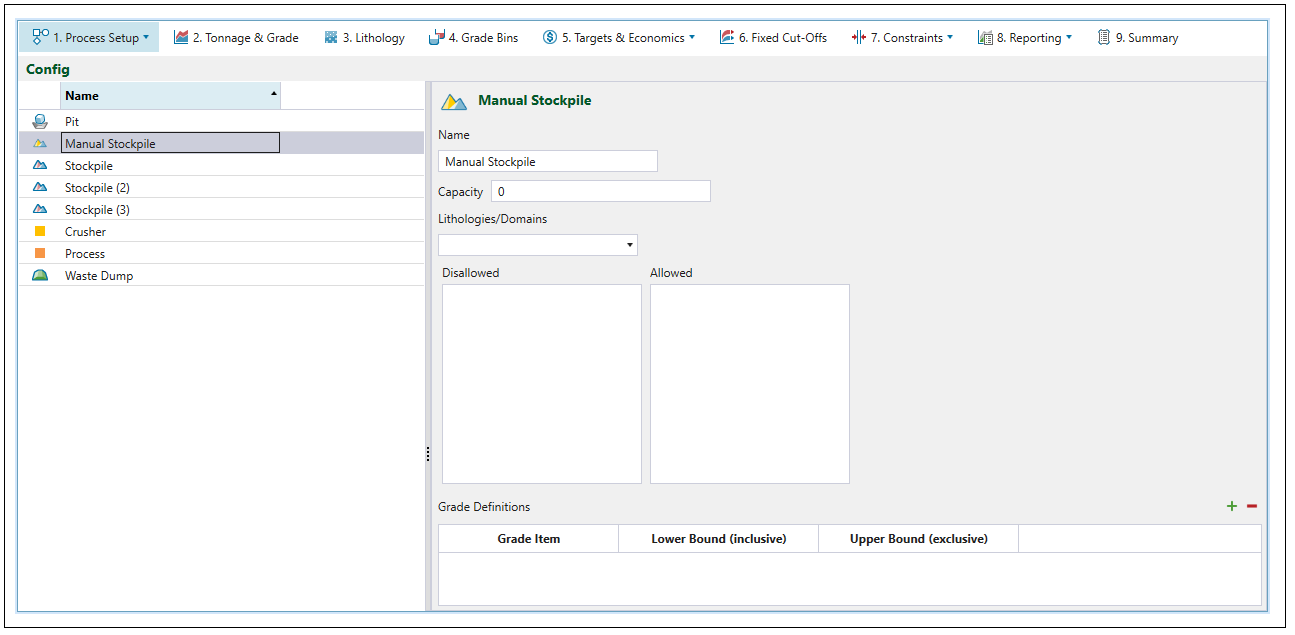
Enter the following information to configure a manual stockpile:
-
Name
Evolution assigns a default name when a manual stockpile is created. Enter a custom name if desired. -
Capacity
Enter a maximum capacity for the manual stockpile. -
Lithologies/Domains
From the drop-down menu, choose a variable from the imported pit that represents the lithologies or domains that the manual stockpile accepts. Next, assign the displayed attributes to the Disallowed and Allowed fields.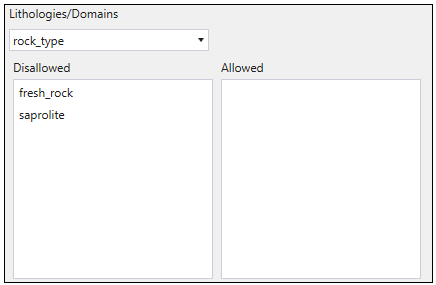
-
Grade Definitions
For each grade item, select a variable from the drop-down menu to represent that grade, and set the upper and lower bound. Click to add a grade item to the list. To remove a grade item, select it on the list and click
to add a grade item to the list. To remove a grade item, select it on the list and click  .
.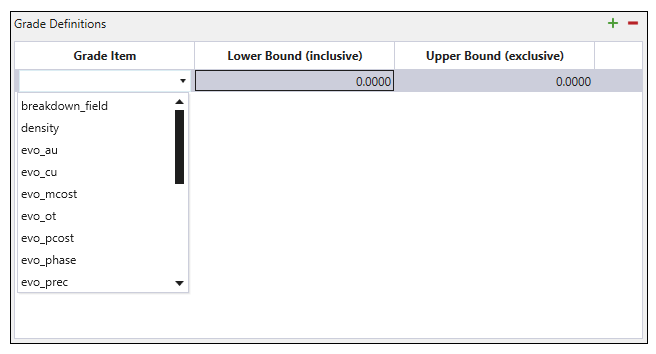
Crusher and Process
The Crusher and Process (mill) nodes are considered to be standard destinations for the material in the flowchart and can only have their name edited and changed.
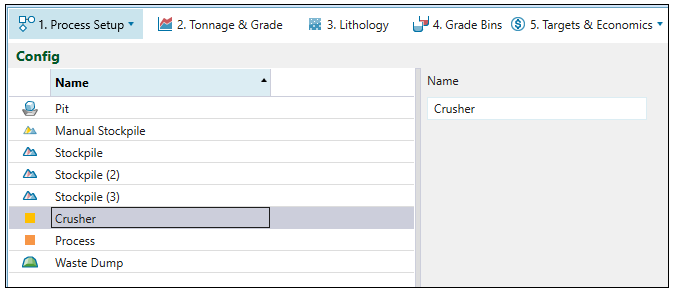
Note: The icon colours for the Crusher and Process nodes in the ![]() Configuration subtab follow the settings that you have made in the
Configuration subtab follow the settings that you have made in the ![]() Material Flow subtab.
Material Flow subtab.
For more information, see Crusher and Standard Process.
 Waste Dump
Waste Dump
Waste dump is a site to which the waste material is transferred. While not required, waste dumps can also be added to the flowchart to accept waste material mined from pits. This allows for the scheduling of dump expansions and their associated impacts on costs and NPV to be modelled.
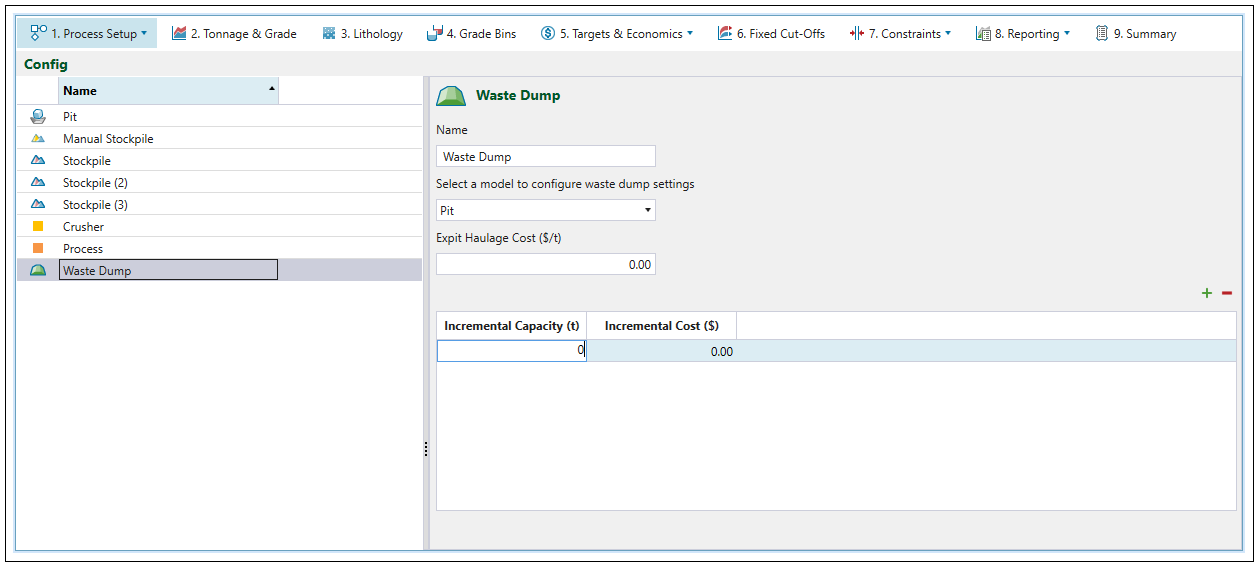
Enter the following information to configure a waste dump:
-
Name
Evolution assigns a default name when a waste dump is created. Enter a custom name if desired. -
Model to configure waste dump settings
Evolution will configure waste dump settings based on the model (pit) you select. -
Ex-pit Haulage Cost ($/t)
Represents the cost (in the currency specified for your setup in Settings) of haulage per tonne at the part of a road network extending from any pit waypoint through to any destination waypoint.
Settings) of haulage per tonne at the part of a road network extending from any pit waypoint through to any destination waypoint. -
Incremental Capacity (in tonnes) and Incremental Cost (in the currency specified for your setup in
 Settings)
Settings)
Click to add a new row to the table. To remove a row from the table, select it on the list and click
to add a new row to the table. To remove a row from the table, select it on the list and click  .
.Note: Waste dumps must contain at least one incremental cost row.
